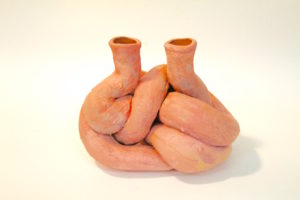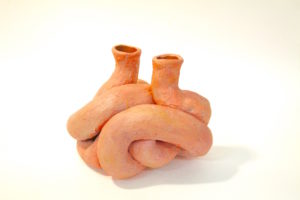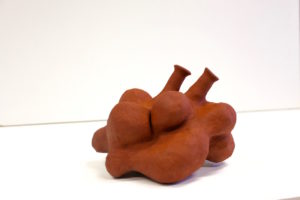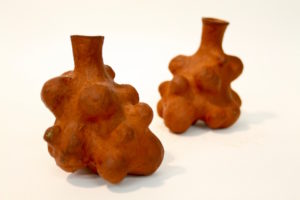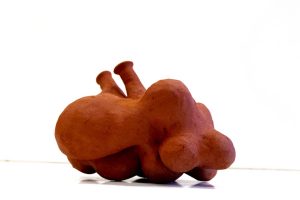ORGANOLEPTS
Terracotta, wax, pigments, wine.
I am exhibiting and discussing my terracotta Organolepts at the Science Museum’s Late event, September 30, 6pm, as part of the recent exhibition Cravings: Can your food control you?
Here are some of the things we discussed:
- Georgian Keveri – the first winemaking was done in buried terracotta and beeswax vessels.
- Indian Ollas – vessels for holding liquid which are buried to irrigate soil.
- The Gut, worms, pink slime, processed food.
- The body as a vessel of emotion, a wineskin – wine in internal organs.
- The scent of food comes from over 10,000 volatile chemicals, while taste is much simpler and more basic biology, and not just about our mouths.
- There are organoleptic (taste) receptors in our internal organs, testicles, lungs, anus and intestines.
- They can taste sweet, sour, salty, umami, bitter + controversially, fat and metallicness – are these tastes?
- They are not just for tasting food but sending complex messages to the brain – about hunger, desire, stress etc.
- This is linked to fertility – we are not sure how yet but if you remove or block them you become infertile.
- Gut feelings – your enteric system, your gut from your tongue to your anus, also contains 500 million neurons (nerve cells), more that 5 times the amount in the brain of a rat, regulating hormones and enzymes, it it our body’s emotional brain – taste, food, digestion, mood and mental health. antidepressants affect the gut neurons too.
- Is it a hangover from more ancient creatures who’s nervous systems are based in the gut?
- Hormones secreted by the gut drive our desires – they tell our brains what we want and alter our behaviour.
- As well as chemicals secreted by messages from our gut, the organisms that live there alter our behaviour too. Tens of trillions of bacteria are in our colon, one of the most complex ecosystems on the planet, and a delicate balance. sixty percent of our immune system is concentrated in the gut.
